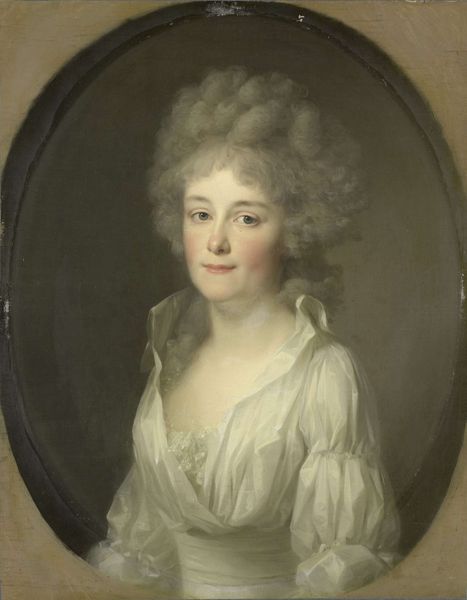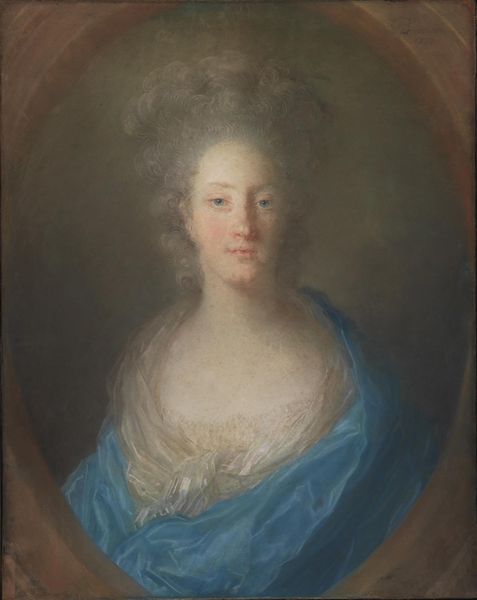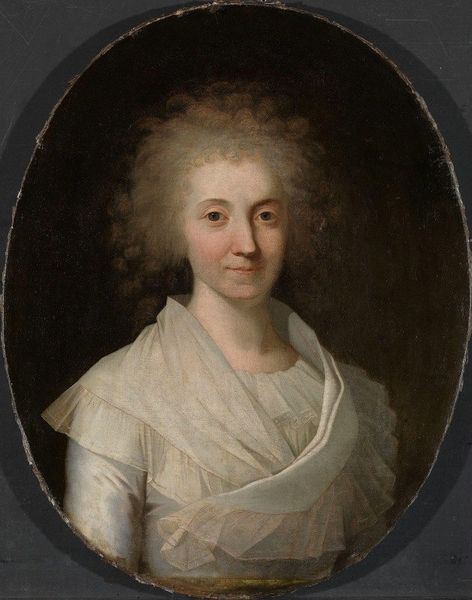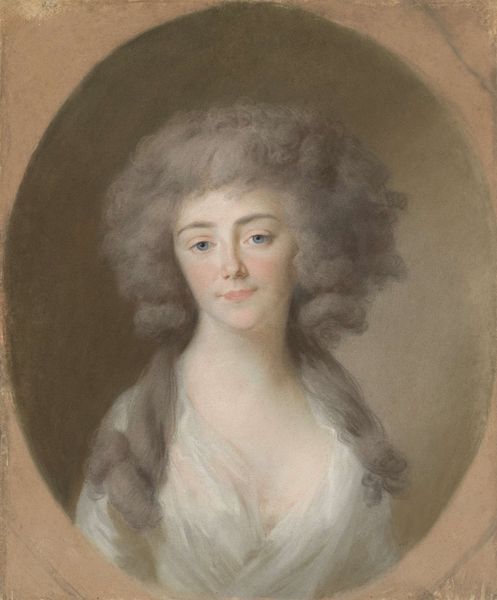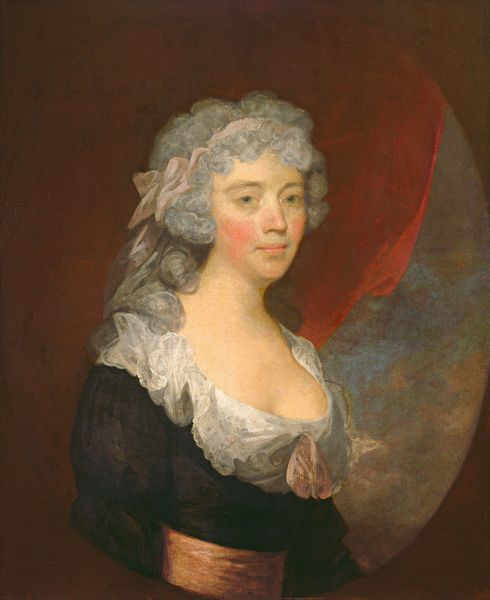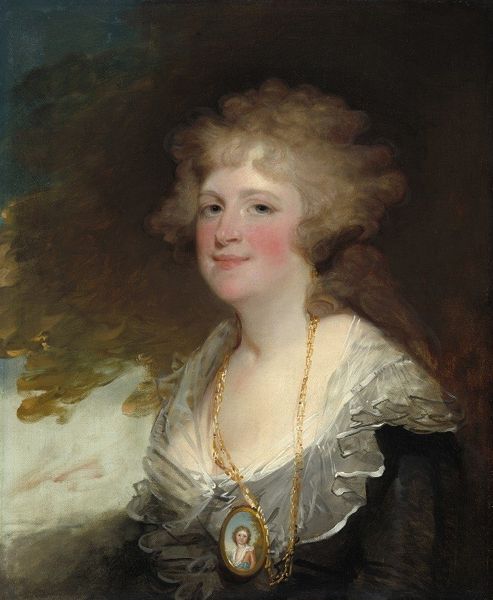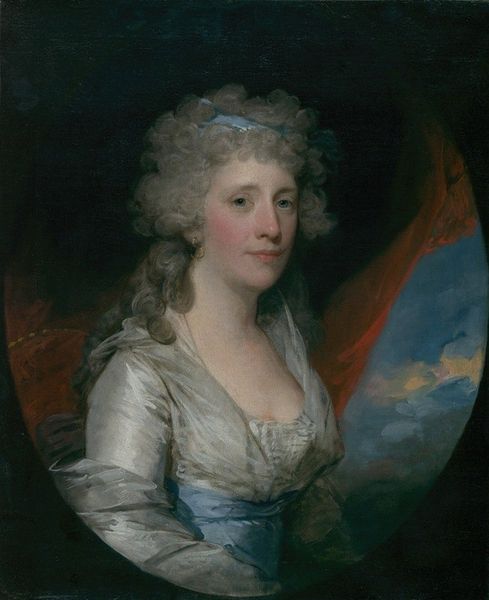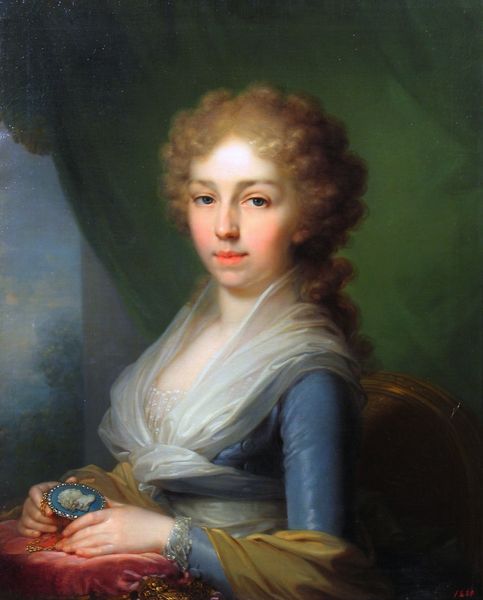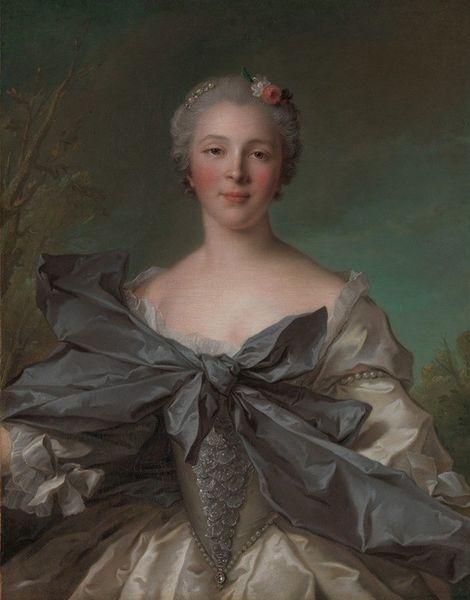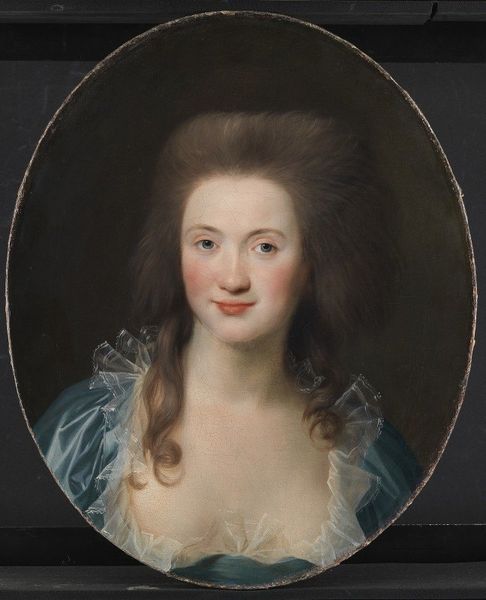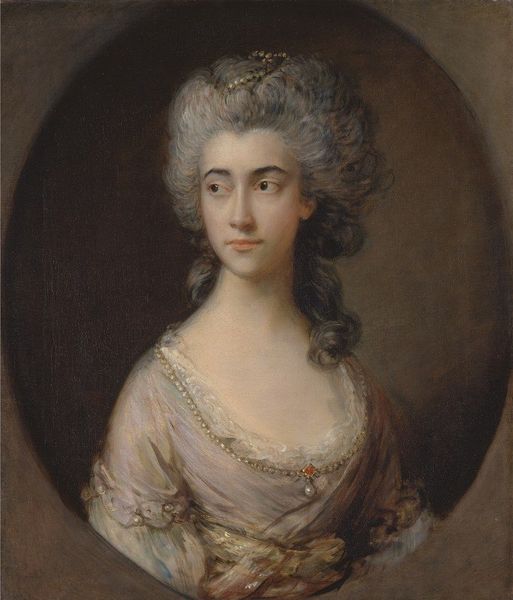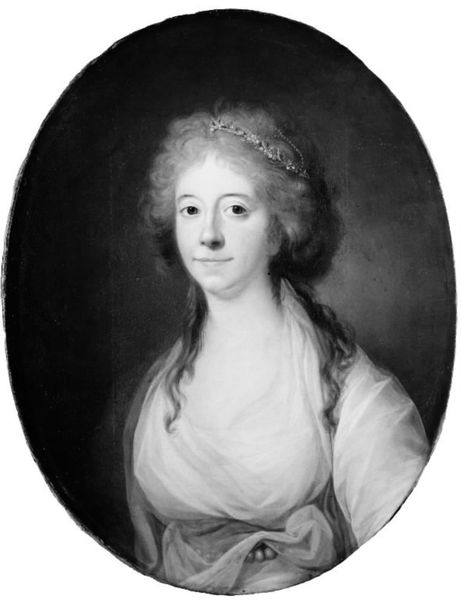
#
figurative
#
character portrait
#
portrait image
#
portrait reference
#
portrait head and shoulder
#
portrait drawing
#
facial portrait
#
portrait art
#
fine art portrait
#
celebrity portrait
#
digital portrait
Copyright: Public Domain: Artvee
Curator: A somewhat wistful aura permeates this portrait. There’s a softness that I find initially quite surprising. Editor: Well, it is a rather tender portrayal. Let's orient our listeners: this is "Portrait of Marie Antoinette," rendered around 1800 by Élisabeth Louise Vigée Le Brun. Knowing what was occurring then historically for Marie Antoinette informs the feeling a great deal. Curator: Precisely. While seemingly simple, even serene at first glance, knowing that this image was painted after Marie Antoinette’s execution infuses every detail with symbolic weight. Her simply styled hair, her modest white dress – it’s all so muted. What cultural symbols resonate with you the most here? Editor: The dress speaks volumes. The white muslin gown was a fashion statement, yes, but it also became tragically linked with her image during the Revolution. It signified a rejection of the court’s excesses, ironically, given her later demise at the hands of the revolutionaries. Curator: Yes, that connection between her perceived extravagance and this very understated rendering truly embodies complexity. Even the composition – the subject framed within what feels like a constricted space adds a layer of meaning, don’t you think? Editor: Absolutely, that framing evokes the inescapable context of her imprisonment and ultimate fate. It feels like Vigée Le Brun is actively attempting to reshape Marie Antoinette’s cultural image, even after her death, back toward simplicity and humanity. Curator: As an iconographer, I'm always struck by how a simple shift in color, say the toning down of adornments, can completely reshape public perception. This portrayal definitely invites compassion, even empathy, for a figure previously associated with opulent excess. Editor: I find myself wondering about Vigée Le Brun’s intentions, her politics, in making such choices. How much was a conscious act of historical revisionism, and how much stemmed from her own complex relationship with her patron and friend? It’s layered. Curator: Absolutely layered, much like memory itself. And I think this artwork remains fascinating because it allows us to see the convergence of iconographic intent and complex social forces in play, as time goes by after great conflict. Editor: Yes, it is an example of how visual imagery, portraiture especially, becomes intertwined with our interpretations of history and politics, inviting us to challenge ingrained assumptions even two centuries later. A complex artifact!
Comments
No comments
Be the first to comment and join the conversation on the ultimate creative platform.
